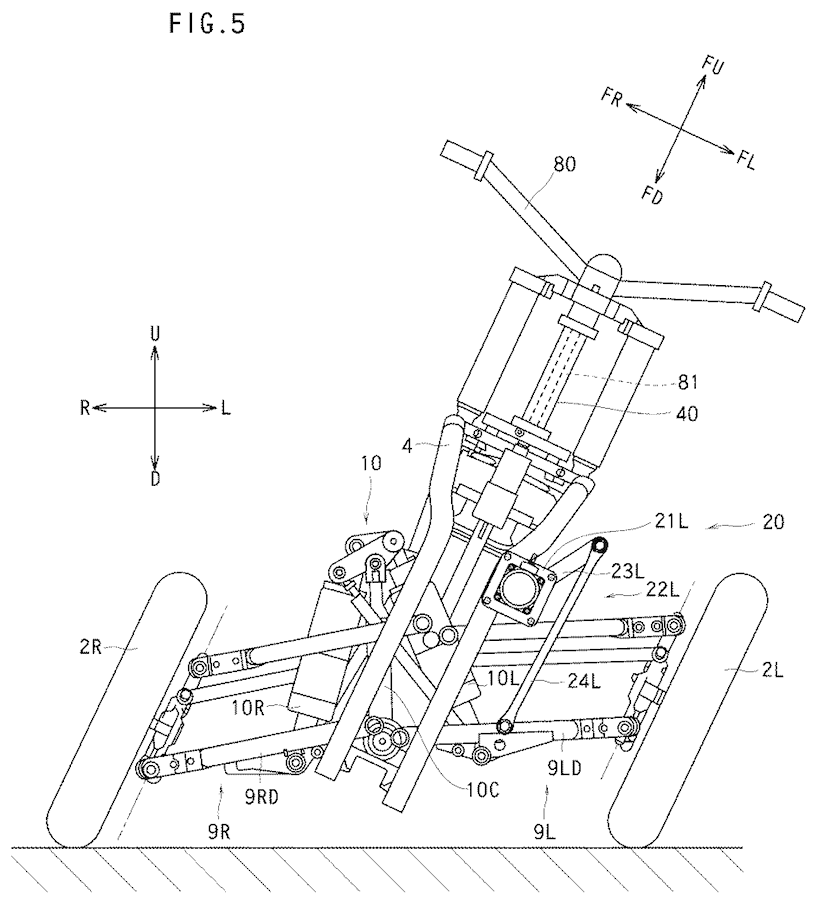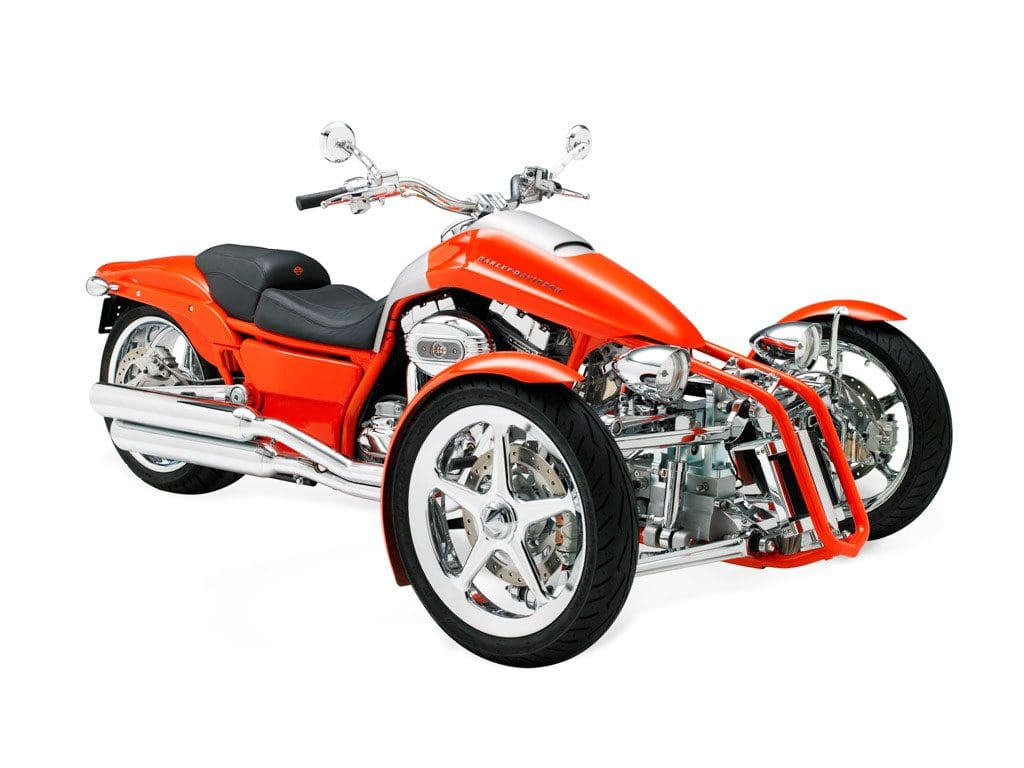Yamaha recently confirmed it is planning more leaning multi-wheel-range (LMW) bikes to join its Tricity and Niken, and a new patent application shows one of them could be powered by Yamaha’s most powerful production bike engine – the 1679cc V4 from its legendary grunt master, the VMAX. The engine design may be a decade old, but it’s still got the goods, producing 147kW (200hp) and 167Nm.
The new patent reveals a VMAX-style machine coupled with a two-wheeled front end. Unlike the Niken and Tricity, which use telescopic forks mounted on a transverse parallelogram linkage to provide tilting front suspension, the VMAX patent application shows a wishbone-style arrangement.
The wishbones, similar to racing-car suspension, have their inboard mounting points positioned as close to the bike’s centreline as possible.

A vertical bracket provides the top mounts for the two front shocks and remains upright as the bike leans into corners.
The system is similar to the arrangement Harley-Davidson used on its stillborn Penster tilting trike a decade ago. That project was dropped at a relatively late stage, but prototypes were produced and are now displayed in the Harley-Davidson museum.
Yamaha’s application focuses on an electronic system that helps control the amount of lean. It’s based on a servo and linkage that can right the bike once it’s tilted over.
Interestingly, while only published this month, the design was penned in late 2016.
In December 2017, Yamaha purchased the rights to another tilting trike patent from small Norwegian firm Brudeli, which made a limited number of KTM-based tilting trikes. Brudeli’s patented design uses a similar wishbone-based set-up but, thanks to clever geometry, uses the bike’s own weight to help encourage it to return to an upright position.
Whether Yamaha will opt to use its own electronic servo-based system or the Brudeli idea is unclear, but there’s strong evidence that a high-powered tilting trike is under development.












